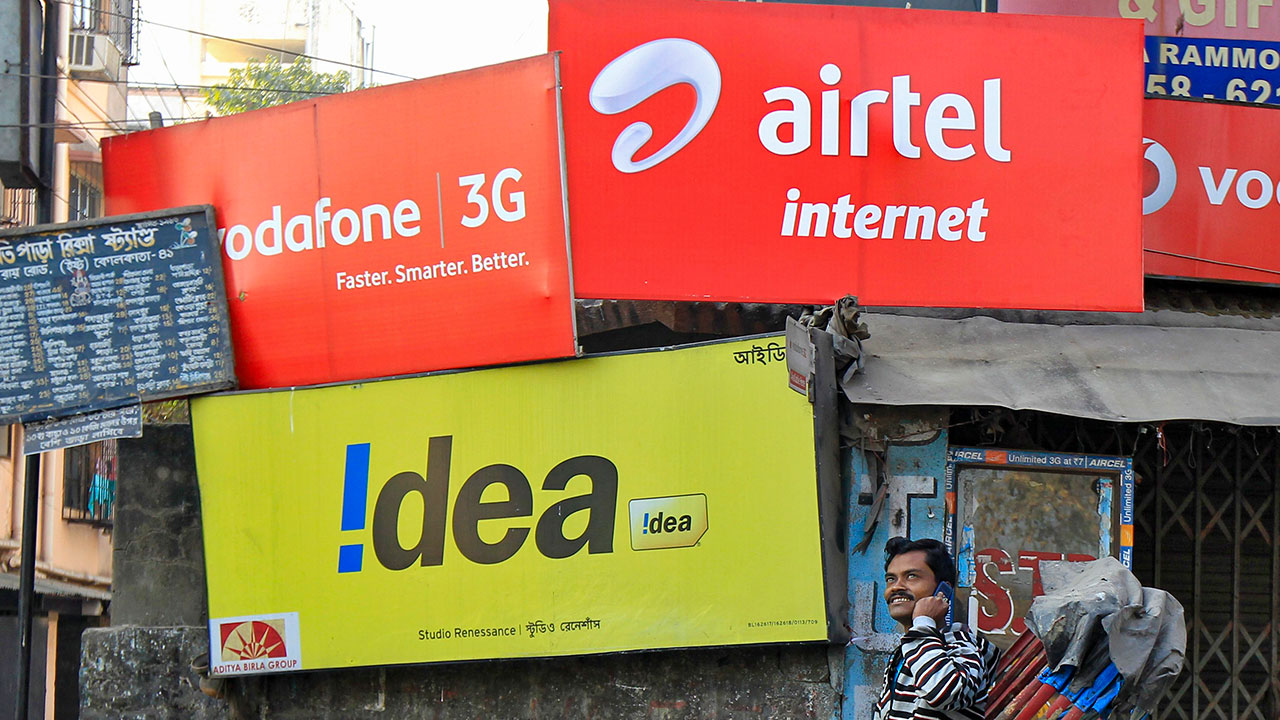
Govt relief, tariff hike temporary fixes for Bharti, Vodafone Idea
India’s telecom industry has been crushed by the recent Supreme Court decision on past dues, with two incumbent telecom operators being impacted the most. Analysts have predicted an increase in the indebtedness of Bharti Airtel and Vodafone Idea by 30-35% because of the levies and fees incurred by the two over several years.

India’s telecom industry has been crushed by the recent Supreme Court decision on past dues, with two incumbent telecom operators being impacted the most. Analysts have predicted an increase in the indebtedness of Bharti Airtel and Vodafone Idea by 30-35% because of the levies and fees incurred by the two over several years. The apex court has ruled on what constitutes adjusted gross revenue (AGR) of telecom operators in India and this has meant a huge potential outgo (some estimates peg this at almost ₹80,000 crore) from the two incumbents.
Even though the government has now announced some relief in payment of these dues and the telcos themselves have decided to effect tariff hikes to mitigate the payment woes, Bharti and Vodafone Idea are still expected to face a rough time financially, going forward. The third major player in the telecom market, Reliance Jio Infocomm (RJio), began operations just three years ago and thus remains unscathed by the apex court’s ruling. In this scenario, the relentless march of RJio in adding subscribers – it is already the number one telco by revenue market share – as incumbents lose subscribers is sure to rub salt on the wounds of the latter.
Also read: Disaster hits telcos, but this was waiting to happen
Bharti, Vodafone’s loss is Jio’s gain
As per latest TRAI subscriber data, RJio added nearly 70 lakh (7 million) subscribers to its already burgeoning customer base in September alone, when Bharti and Vodafone Idea together lost nearly 50 lakh (5 million) subscribers in that month compared to August. The rise of RJio can also be gauged from another metric: since September 2018, the telco has added more than 100 million subscribers while incumbents have been losing their customer base.
In September 2018, Bharti had nearly 30% share of total subscribers while RJio had one in five (21.57%). One year down the line, RJio controls a little over 30% of the market while Bharti has been relegated to the second position with a tad more than 27% of total subscribers. The Vodafone Idea combine has 31.73% share of subscribers now, but in September 2018, though they were two separate operators, the combined market share of Vodafone Idea was over 37%. It is clear that RJo has been wooing subscribers of the two incumbent telecom operators at breakneck speed, with Vodafone Idea losing more of its subscriber base than Bharti.
And while RJIo’s relentless march is in no doubt, analysts have noted that the pace of this march has slowed in recent months, perhaps due to the prevailing economic conditions. Pranav Kshatriya, Sandip Agarwal and Nisha Jain of brokerage Edelweiss have said that the acquisition of 7 million subscribers in September by RJio is its lowest monthly addition in nearly two years.
“We attribute this to the overall consumption slowdown, particularly in rural markets, but believe the recent cut in Jiophone price from ₹1,100 to ₹699 would revive additions. Our channel checks suggest robust traction in Jiophone post price-cuts, particularly during the festive season in October. That said, we will watch out for RJio’s tariff action and the impact of its IUC (interconnect usage charge) levy on off-net calls on subscriber churn.”
Also read: Policy mess in Indian telecom market leaves Vodafone with no option but to exit
What will decide telecoms fate?
The analysts have added that it is imperative for Bharti and Vodafone Idea to ramp up their respective subscriber additions to sustain their revenue market shares. As per latest TRAI (Telephone Regulatory Authority of India) data, RJio has the biggest revenue market share at almost 37% or more than a third, followed by Bharti at 31% or nearly a third and Vodafone Idea at about 28% or a little more than a fourth of the market.
Going forward, some key developments are likely to determine not just the financial health of India’s three large telcos, but may determine their very survival.
First, the TRAI is set to decide on the IUC (internet usage charges) regime. At present, the network on which an incoming call gets connected is charging six paise per minute as IUC and the TRAI has already begun industry-wide consultation on whether this charge should be removed or continued. Analysts at Kotak Institutional Equities have noted that the recent decision of Bharti and Vodafone Idea to raise tariffs indicates that TRAI may continue with the IUC regime. If that happens, RJio may not roll back the price increase it took recently.
Also read: Telcos reeling under revenue blow could do with some kindness
“This would mean increased degrees of freedom on pricing for Bharti and VIL, in our view,” the analysts said. Put simply, continuation of the IUC regime will likely provide more pricing power to debt-laden telecos and that could bring some cheer. Analysts have noted that Vodafone Idea and Bharti need to raise tariffs significantly for any meaningful lessening of their debt burden due to pending AGR payments and this can only happen when RJio also raises tariffs in tandem. The quantum of tariff hike for each telco should become clear by next week. RJio has meanwhile already imposed a six paise per minute charge for outgoing calls to other networks.
The second development which could potentially have a significant impact on telcos is whether the government revives earlier plan of imposing a floor price for tariffs. Though it seems to have abandoned the idea for now, telcos will likely be wary of announcing steep hikes in the first round of increases expected early next month.


